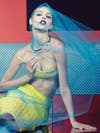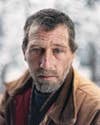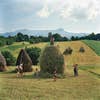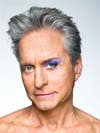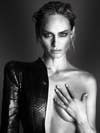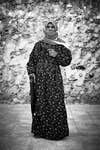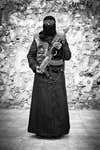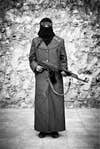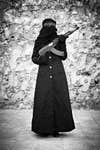In this shoot for Elle (October 2013), longtime friends and collaborators Ruth Hogben and Lady Gaga explore the idea of a person versus her persona. “What do you imagine Lady Gaga doing when she’s at home?” Hogben asks. “We wanted to see different sides of her…which is why we thought we’d like to play on the voyeuristic.” From there they improvised, drawing inspiration from an all-glass house that suited their theme. “The more planned I am, the happier I am on set. But something can always happen. It’s about being open to seeing what’s in front of you,” Hogben says. “She’s such a beautiful lady, and …she’s got such incredible eyes. I mainly wanted to see a version of Lady Gaga as I see her.” Hogben demurs on the “boring” technical details, instead noting, “No matter what medium, you have to do something with feeling…it’s just honest. I think that’s why [Gaga] can look so boldly and elegantly down the lens.” © Ruth Hogben © Ruth Hogben “I really wanted to see an isolated supercell,” Dobrowner says of the advent of his project Storms (Aperture, September 2013). So in July 2009 he booked a stormchasing holiday from South Dakota to New Mexico. Quickly hooked on the experience, he was soon making photographs like “Funnel, Northern Plains,” above right, one of a series of tornadoes dropped by an isolated supercell near Regan, South Dakota. Now his name is mentioned after Ansel Adams and Minor White (we can see why). Dobowner aims to capture storms and other massive landscapes, like “Nibiru Stone,” above, a large piece of ice sitting on the Icelandic shoreline, as “living beings, both rational and unpredictable in the way they look, how they move, grow, and die,” he says. © Mitch Dobrowner © Mitch Dobrowner Contending with crowds, lighting unpredictable scenes, and navigating security makes shooting portraits at political events a major challenge. Anderson calls his often uncomfortably tight representations “icon x-rays—icon as in religious painting, x-ray as in there’s something about the hard flash…that kind of reveals something underneath.” His extreme close-ups of Michael Bloomberg, Mitt Romney, Corey Booker, and others on both sides of the aisle have become iconic in themselves. “I’m never trying to make anyone look bad,” he says. “What I want [my images] to be is authentic.” This visceral image of New Jersey Governor Chris Christie (New York, August 12, 2013) reveals, for us, the human behind the larger-than-life personality. Anderson’s book of campaign-trail portraits is titled Stump (RM, November 2013). © Christopher Anderson/Magnum Photos
INDIA-WEATHER-MONSOON-FLOOD
In India, monsoon season is the life force of the country, bringing about two-thirds of the nation’s total annual rainfall and providing the water crucial to farming and other resources. It also causes extensive property damage, injuries, and death, taking its toll over many months. June through September 2013 was one of the longest, heaviest, and most damaging monsoon seasons in years. In this haunting photograph from last August of a young man dangling from a power line moments before he drops into the overflowing Ganges, AFP’s Sanjay Kanojia captures the isolation, power, and suspense of a flood in all its turbulent drama.
Self-portraits tap into a nearly universal desire to understand oneself in the mirror of culture. And Jen Davis’s self-portraits show us how distorted that mirror can be. “[These images] are about the body, about fitting in, looking for beauty in a culture that doesn’t recognize that an obese person is to be considered in the same category [as the images we see every day],” she says. Davis began this project over a decade ago, when she was much heavier than she is in these more recent images. And early on she began showing the camera a different side of herself: “This is not how I present myself to the world. It’s a more interior sense of myself.” In that respect, she says, “it’s not just about weight. People can put themselves into the work even if they’re not my size. They see things they’ve struggled with, whether weight or relationships or something else.” This year she had two important solo exhibitions in Europe and a raft of fresh attention from critics and journalists online; a monograph is due out from Kehrer Verlag in the spring. © Jen Davis, courtesy of Lee Marks Fine Art, Indiana, and ClampArt, New York couch with light_neg 9 001 © Jen Davis, courtesy of Lee Marks Fine Art, Indiana, and ClampArt, New York Picture 001 © Jen Davis, courtesy of Lee Marks Fine Art, Indiana, and ClampArt, New York Is that really her living room? No. But that is a question Lori Nix wants you to ask about the pinnacle of her eight-year project, The City, shown at ClampArt in New York this fall. Her lifelike photographs begin as dioramas—some as small as 50×60 centimeters—that she builds with her creative partner, Kathleen Gerber, who adds aging and deteriorating effects. “We have a great symbiotic relationship—I build them, and she helps destroy them,” Nix says. The scenes recall the 1970s disaster movies she grew up watching, images of crumbling buildings and abandoned subways, and nature reclaiming the built environment. (By coincidence, she finished “Subway,” above left, just before Hurricane Sandy hit in late 2012; it debuted at © Lori Nix © Lori Nix Veteran Boston Globe photographer John Tlumacki says he was about 40 feet away from the first bomb to explode at the Boston Marathon last April 15. The force of the blast knocked down runner Bill Iffrig, and police officers responded instantly, as did Tlumacki, who took this picture within seven seconds of the blast. As the only photographer nearby, he says, “my instinct was to go forward,” capturing the juxtaposition between a tradition and terror. “My responsibility was to show the victims, to show what terrorism does,” he says. Sports Illustrated picked an image which Tlumacki had cropped to the center of the frame for its cover the week after the attack, but we prefer his original, wider view. In the months since, Tlumacki has connected with runners, spectators, and police officers he photographed; he’s now working on a project following the recovery of two of the victims. The ordeal, he says, “has given me a new appreciation for covering everyday people. I really learned to appreciate what powerful photographs can do.” © John Tlumacki Feinberg’s photographs of marathoners’ running shoes for the cover of Boston magazine the week following the Boston Marathon bombing represents not only the resilience and compassion of a city but the support of the photo community in expressing it. “When the magazine called I was already booked,” Feinberg says. “But a client graciously allowed me to set aside a half day to do this.” This alternate image, of the shoes flipped over, sidestepped similar obstacles that on any other day would be insurmountable. Feinberg pitched the idea of flipping the shoes over in situ for a back cover image. The magazine already had an ad there, but the publisher canceled it to include the extra tribute. “That is a heroic thing,” Feinberg says. Made in collaboration with Boston design director Brian Struble, stylist Megan Caponetto, photo assistant and digital tech Keith Krick, and retoucher Shin Ono, with all proceeds from the sale of a poster version going to the One Fund, a nonprofit formed to assist bombing victims and their families, the photographs are ingenious and heart-rending symbols of one of the most important events of the year. © Mitchell Feinberg
Child takes a picture of herself with a mobile phone at an Eid al-Fitr party for Syrian and Iraqi refugee children injured during violence in their countries in Amman
Reuters photojournalist Ali Jarekji made this image of a child snapping a photo with a mobile phone at a party in Amman, Jordan, for Iraqi and Syrian children injured by violence. According to a UN report, half of Syria’s 1.7 million refugees are children, while in Iraq, hundreds of children each year are killed or maimed, typically by improvised explosive devices. In this quiet, personal moment amid the celebration of Eid al-Fitr, the feast that breaks the fast at the end of Ramadan, the child’s nationality is unclear—and irrelevant. Jarekji defines a universal message in a most intimate way.
Notes, Contacts, Name CQ’s here
At first glance, Gonzalez’s photograph of San Francisco 49ers wide receiver Michael Crabtree appears to be one of those iconic images of hard-won football glory. Look again—at the exuberance, at the opposing team standing by almost in awe. This touchdown was one of three the soon-to-be conference champions scored against the Arizona Cardinals, who ended this final regular-season game having lost 11 of their last 12 match-ups. It is Goliath beating David, with perfect theatrical lighting provided by the Almighty. When Crabtree glided through the air into the end zone, the longtime San Francisco Chronicle photographer responded with the intuition that comes with years of practice. “I reached for my short-lens [16–35mm] camera, and I don’t even remember putting it up to my eye,” Gonzalez says. The result: a terrific portrait. “You really get a sense of his personality,” he says
.
As a theme, seduction is one of those wide open to interpretation. Assigned to photograph this concept for Interview’s April fashion feature, McDean took a coquettish angle, combining bright spring colors, sultry shadows and veils, and a mod vibe as a backdrop for model Sasha Pivovarova’s “demure sensuality.” He says, “I’ve worked with Sasha many times…. I always give her a character to play, as she has a wonderfully unique way of interpreting it.” No matter the style, success depends on the connection between the seducer and the seduced, and for McDean this is as true on set as in life. “The subject must have a willingness to give part of themselves to you in the picture. Shooting amazing models like Sasha who understand this is always a pleasure,” he says.
For its feature “Hollywood Heroines” (December 9, 2012) the New York Times Magazine approached Los Angeles–based artist Tierney Gearon to photograph stills and direct a set of short films featuring actresses who had played some of 2012’s most important roles: Emmanuelle Riva, Rebel Wilson, Kerry Washington, Jennifer Lawrence, Quvenzhané Wallis, Amy Adams (in this enigmatic shot), and about half a dozen others. Each still is photographed in Gearon’s distinctively low-fi style, using everyday props, bubbles, glass cubes, and the like, and invites each actress into a world of fantastical, often whimsical characters. It was “magical for everyone. It was like being inside a group of kindergartners’ art project,” the self-taught artist writes on her website. “We all became part of these fantasies and we lived them with each actor.” © Tierney Gearon Like so many artists and writers before him, Austin-based Bryan Schutmaat traveled throughout Wyoming and Montana to, as he says, “engage with the mythical promise of the West and where it has led.” Focusing on individuals he met there led to Grays the Mountain Sends, his series exploring the inner and outer landscapes of the region, which has been winning accolades all over; the first edition of his book by the same name, published by the Silas Finch Foundation this fall, quickly sold out. His portraits and landscapes combine into a narrative that transcends documentary. “It’s funny,” Schutmaat says. “Despite my interest in the historic, political, and social, and despite these all being pictures of real people and places, I [see] these photos as fictional art. If it reflects what’s going on in society, it’s in symbol or allegory.” © Bryan Schutmaat © Bryan Schutmaat When National Geographic asked Rena Effendi to shoot images for the magazine’s 125th anniversary, its editors sent her to the Carpathian Mountains in search of hay. Born in Azerbaijan, Effendi has built a career photographing in the post-Soviet region and exploring the effects of modernization, so she was on familiar turf. The images she returned with feel as if they came straight out of a children’s tale, but they depict a very real scene that is on the verge of disappearing. In Maramures, Romania, families maintain ancient agrarian traditions despite the impending encroachment of modern development. “It’s important to document this way of life, because I know that it’s endangered,” Effendi says. “In spite of the fact that the majority of the world’s population is still living in rural areas, we are moving toward industrialized agriculture. Witnessing and documenting a way of sustainable and environmentally friendly living, in total harmony with nature and deeply rooted culture, was a privilege for me.” © Rena Effendi/Institute
Eithafoedd | Extremities
For Gareth Phillips’s series Y Tir Newydd | The New Land, begun in 2012 and shown in the UK in 2013, Phillips traveled to the farthest reaches of the traditional cardinal points (north, south, east, west, high, low) of his native Wales, camping out for days at a time to absorb the feeling of each place. This sense of connection was vital to his process. “It was hugely important, as I am constantly trying to understand how I connect with the land I call home,” Phillips says in a statement describing the project. “Each location invoked various emotions—caves and forests at night invoked anxiety and fear; the coasts and mountains invoked elation and euphoria.” His abstracted details are not picturesque landscapes but geological Rorschach tests, inviting us to see ourselves in the world we are in and the one we came from.
The way Prior captures an annual expression of pure energy in Tultepec, Mexico, caught our attention. And it’s this very raw energy that first captured Prior’s imagination, too. Introduced to the annual fireworks festival by a friend via YouTube videos, Prior, who funds personal projects like this one with editorial work for titles such as Men’s Journal, New York, and_ Bloomberg Businessweek_, went looking for quality photographs of the event and found none. So he did what any self-respecting photographer would do: He arranged a trip with said friend to go and make his own. “We stayed for six days to get our fill of Mexico City and some nice warm weather,” the Brooklyn-based artist says. “But we went specifically for this seven-hour part of the nine day celebration.” © Thomas Prior
A woman and children hide inside Westgate Mall in Nairobi, Kenya, Sept. 21, 2013.
Tyler Hicks was leaving a shop about 10 minutes from his house in Nairobi, Kenya, when he realized all hell was breaking loose at the nearby Westgate Mall September 21. The Pulitzer-winning New York Times photographer headed to the scene while on the phone with his wife, also a photojournalist, whom he asked to come with both their photo and protective gear; he would begin his coverage with the small personal camera he had with him. “While on one of the upper levels, I looked down and noticed a woman hiding in a café below with two children,” Hicks says of this photo, one of the most striking in a gripping set he photographed over about two hours. “Less fortunate who had lost their lives had fallen close by. As difficult as it can be to witness…these are truthful documents of a crime that happened in a very public place,” he adds. “People have the right to know what’s happening in their community, whether that’s in Kenya or anywhere else in the world.”
It’s rarely easy to get a celebrity’s protective entourage to go along with a photo concept that does so much as crack his carefully constructed persona. But for this May 20, 2013, cover story for New York magazine, Martin Schoeller says, Michael Douglas and his agent proved the very opposite of difficult. “They understand the importance of creating a memorable photograph that stands out, grabs your attention,” he says. Schoeller wanted to riff on Douglas’s role as Liberace in the HBO film Behind the Candelabra. “Michael liked the concept, embraced it, and played along,” Schoeller says. “It’s one of my favorite images I have ever taken.” © Martin Schoeller/August Following the long fashion-publishing tradition of September issues, Interview ran seven separate covers, each with a different supermodel—Naomi Campbell, Linda Evangelista, Kate Moss, Stephanie Seymour, Christy Turlington, Amber Valletta, and Daria Werbowy—and then featured some 70 more inside. Mert Alas and Marcus Piggott created a sultry package in black and white, featuring black animal-skin and synthetic fabrics, smoky eyes, nude lips, and—most important—these famous faces. Stripped of more immediate or traditional notions of glamour, these photos, exemplified by this one of Valletta, reveal a sense of the real women who are the veterans of their craft. “In this picture, the inspiration was Amber herself and her raw, wild beauty,” Alas and Piggott say. © Mert Alas & Marcus Piggott/Art Partner One of North America’s most acclaimed environmental photographers, Burtynsky takes on the massive industrial projects by which humans have transformed the natural landscape, from mining to manufacturing to oil. “We’ve created kind of a synthetic, abstracted environment,” Burtynsky says. Now he takes on H2O: Steidl brought out his latest book, Water, this fall. The distance required to capture entire irrigation systems and redirected rivers, as he does in this 2013 aerial view of Cádiz, Spain, forces an abstraction that challenges the viewer: Wrap your head around how vast our impact is. The photograph’s success, he says, depends on a perfect balance of content and form: too much of one, and it’s photojournalism; too much of the other, and it’s fine art. “The image sits on the edge where both have something to offer,” he says. “When both of these elements are tuned in, the viewer can tune in to it.” © Edward Burtynsky, courtesy of Nicholas Metivier Gallery, Toronto/Howard Greenberg Gallery and Bryce Wolkowitz Gallery, New York “Women are an important part of the revolution,” says photojournalist Sebastiano Tomada Piccolomini. With the disparity in power between the Syrian military and the civilian resistance, he says, women bring strengths to the effort that enable people to continue fighting for their home. The women in this series are members of an underground women’s resistance group in Aleppo. After “basically begging” the leader’s husband (himself a head of another rebel group) for an introduction, Tomada (his preferred surname) was reluctantly granted access. The women agreed to be photographed only on certain conditions: no real names, no mention of their neighborhood, no visual cues to give away their location. The portraits, part editorial, part documentary, reveal in their quasi-anonymity a glimpse of the reality that Western eyes seldom see. © Sebastino Tomada Piccolomini Om Faraj, a member of the only all-female Katiba fighting beside the Free Syrian Army, standing inside a secret command outpost in the city of Aleppo says: eing mistreated by a regime security guard in front of my husband was the most humiliating thing that has ever happened to my family, I picked up a weapon, I joined the fight” Om Faraj, 30 years old housewife, no children. Troops loyal to Assad and rebels have been locked in a deadly stalemate in Aleppo, Syria’s largest urban center and main commercial hub, since an opposition assault last summer. Eight months later, the rebels hold large parts of the city and its outskirts, including several army bases. But they have been unable to overcome the regime’s far superior firepower. Emerging from the shadows of their secret command outpost, these are the members of the only all-female fighting unit in the war-torn Syrian city of Aleppo who have come together to augment the fighting power of the FSA.’Women are fighting on all the fronts now”, a female activist said “…women often transport weapons and supplies for rebels as they are less likely to be searched at army and security checkpoints…soon they will be fighting on all fronts”. (Photo by Sebastiano Tomada_Aleppo, Syria 2013) © Sebastino Tomada Piccolomini Ali, a member of the only all-female Katiba fighting beside the Free Syrian Army, standing inside a secret command outpost in the city of Aleppo says: The West sees no problem in Syria, while we beg fot their support…our children, friends and family are being punished, for no reason”. Ali 16 years old, student. Troops loyal to Assad and rebels have been locked in a deadly stalemate in Aleppo, Syria’s largest urban center and main commercial hub, since an opposition assault last summer. Eight months later, the rebels hold large parts of the city and its outskirts, including several army bases. But they have been unable to overcome the regime’s far superior firepower. Emerging from the shadows of their secret command outpost, these are the members of the only all-female fighting unit in the war-torn Syrian city of Aleppo who have come together to augment the fighting power of the FSA.’Women are fighting on all the fronts now”, a female activist said “…women often transport weapons and supplies for rebels as they are less likely to be searched at army and security checkpoints…soon they will be fighting on all fronts”. (Photo by Sebastiano Tomada_Aleppo, Syria 2013) © Sebastino Tomada Piccolomini Benifet Ikhla, a member of the only all-female Katiba fighting beside the Free Syrian Army, standing inside a secret command outpost in the city of Aleppo says: “I fight for life and freedom, I fight to prove that woman and man are equal” Benifet Ikhla, 27 years old, widow with 6 children. Troops loyal to Assad and rebels have been locked in a deadly stalemate in Aleppo, Syria’s largest urban center and main commercial hub, since an opposition assault last summer. Eight months later, the rebels hold large parts of the city and its outskirts, including several army bases. But they have been unable to overcome the regime’s far superior firepower. Emerging from the shadows of their secret command outpost, these are the members of the only all-female fighting unit in the war-torn Syrian city of Aleppo who have come together to augment the fighting power of the FSA.’Women are fighting on all the fronts now”, a female activist said “…women often transport weapons and supplies for rebels as they are less likely to be searched at army and security checkpoints…soon they will be fighting on all fronts”. (Photo by Sebastiano Tomada_Aleppo, Syria 2013) © Sebastino Tomada Piccolomini For this year’s annual showcase, in addition to our own picks we asked some of the sharpest photographers we know, all published in these pages within the last year, to nominate their favorite images of the past 12 months. They sent us stunners from every genre; some captivating and challenging, others just plain cool. Many offer lessons in how readily luck comes to the well prepared; each one shows the myriad ways photography connects people— shooters, subjects, and viewers alike. Here’s our final cut.
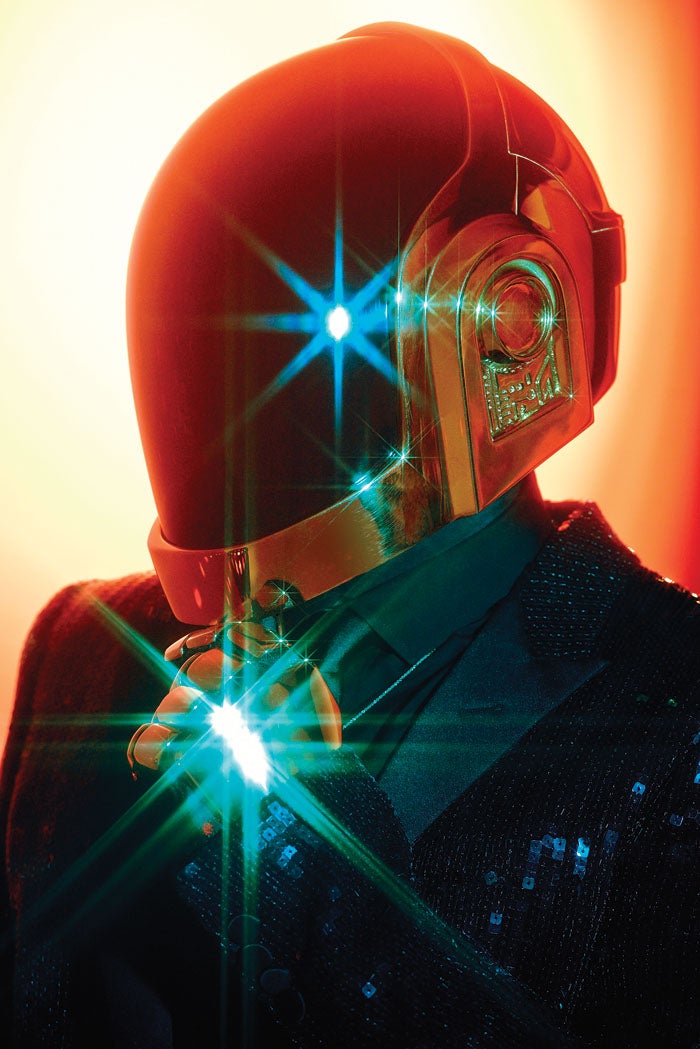
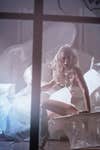
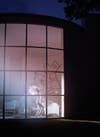










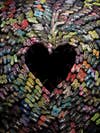

![At first glance, Gonzalez's photograph of San Francisco 49ers wide receiver Michael Crabtree appears to be one of those iconic images of hard-won football glory. Look again—at the exuberance, at the opposing team standing by almost in awe. This touchdown was one of three the soon-to-be conference champions scored against the Arizona Cardinals, who ended this final regular-season game having lost 11 of their last 12 match-ups. It is Goliath beating David, with perfect theatrical lighting provided by the Almighty. When Crabtree glided through the air into the end zone, the longtime San Francisco Chronicle photographer responded with the intuition that comes with years of practice. "I reached for my short-lens [16–35mm] camera, and I don't even remember putting it up to my eye," Gonzalez says. The result: a terrific portrait. "You really get a sense of his personality," he says](https://www.popphoto.com/uploads/2019/04/12/PI76KIWVWHV6UM2OXHNPTT4AXY.jpg?auto=webp&optimize=high&width=100)
